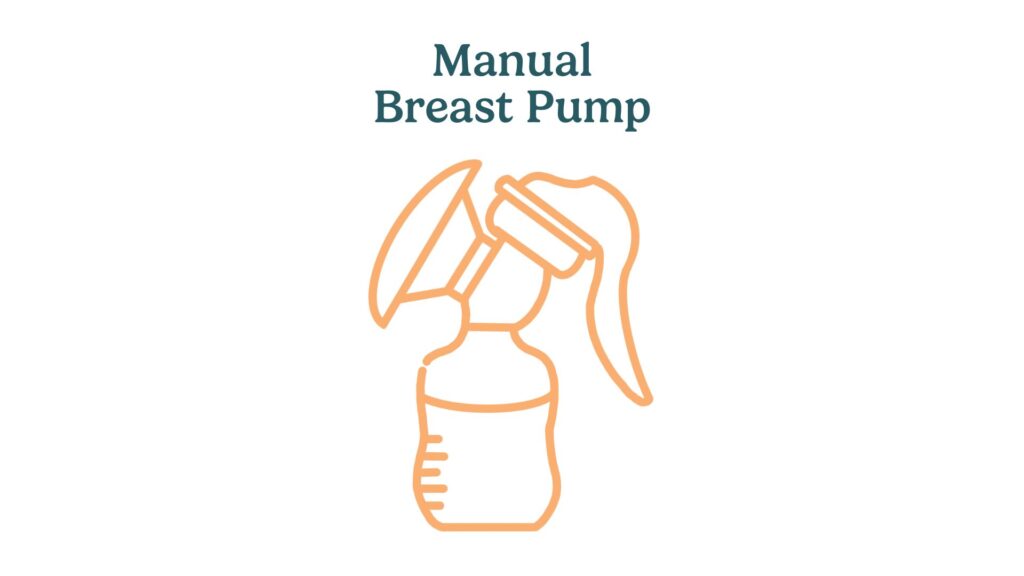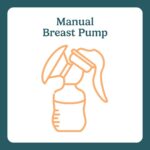manual breast pump

Manual breast pump
A manual breast pump is a hand-operated device used to extract milk from your breasts. Unlike electric pumps, manual pumps do not require batteries or electricity. Instead, you use a lever or handle to create suction. Manual pumps are often smaller, more portable, and quieter than electric pumps, making them convenient for occasional use or when you need to pump discreetly. A manual breast pump is an excellent option for milk removal when you don’t have access to electricity (such as in power outages, on airplanes or in the car, or when hiking and camping).
What to watch out for
When using a manual breast pump, it's important to be aware of a few key points to ensure a comfortable and effective experience.
- Discomfort or pain: Pumping should not cause pain. If you experience discomfort, check that the pump parts are correctly assembled and fit your breasts properly. The flange should match the size of your nipple to prevent pain and ensure effective milk removal. Adjust the suction by controlling the speed and strength of your pumping. Learn more about using the right flange size.
- Hand fatigue: Because manual pumps require you to use a lever or handle to create suction, you might experience hand fatigue, especially during longer pumping sessions. Take breaks if needed and switch hands to reduce strain.
- Hygiene and maintenance: Clean all pump parts that come into contact with breastmilk after each use. Follow the manufacturer's instructions for proper cleaning and sterilization. Regular maintenance helps ensure the pump functions efficiently and prevents contamination. Read about How Often to Replace Pump Parts.
Physical limitations or health circumstances
Certain physical conditions or health circumstances might affect your use of a manual breast pump.
- Nipple pain or damage: If you have sore, cracked, or bleeding nipples, pumping might be uncomfortable. Use a nipple balm to soothe your nipples and ensure you're using the right pump settings and flange size. We advise against using lanolin-based creams; use nipple balms instead.
- Additional helpful resources:
- Carpal tunnel syndrome or arthritis: If you have conditions that affect your hands or wrists, such as carpal tunnel syndrome or arthritis, using a manual pump might be challenging. Consider using an electric breast pump for less strain on your hands.
- Premature or ill infants: If your baby is premature or has health issues, you might need to pump more frequently to establish and maintain your milk supply. Work closely with healthcare providers to create an effective pumping schedule.
Other terms
Understanding related terms can help you better manage your breastfeeding and pumping process.
- Electric breast pump: A motorized pump that extracts milk using a motor to create suction, available in single or double models.
- Double electric breast pump: A motorized pump that extracts milk from both breasts simultaneously, suitable for frequent pumping.
- Flange: The part of the breast pump that fits over your nipple and areola; comes in various sizes to ensure a proper fit. Learn more about using the right flange size.
- Let-down reflex: The natural release of milk from your breasts, stimulated by your baby's sucking or the breast pump's suction. Learn more about let-down reflex.
- Exclusive pumping: Providing breastmilk solely through pumping, rather than direct breastfeeding.


